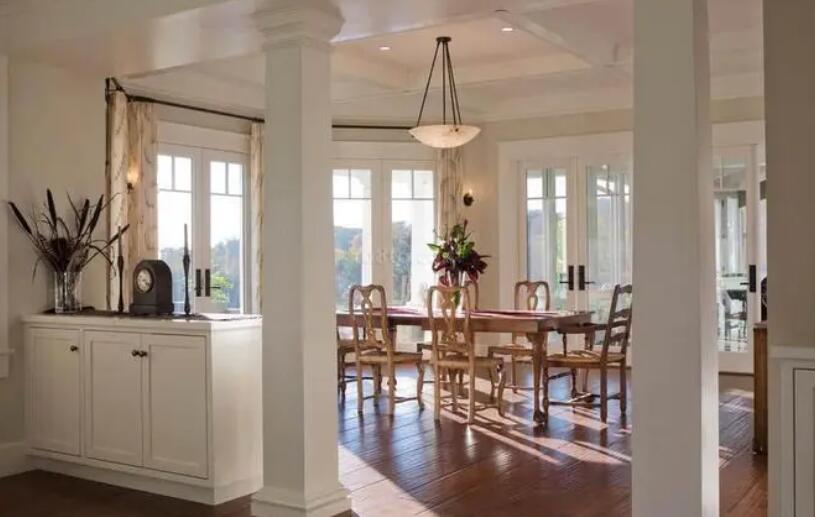Where major structural work has taken place, the contemporary home often has exposed supporting pillars, columns or beams. While exposing them is a common design practice, the bad news in Feng Shui is that they're not conducive to free-flowing Qi. Often angular, linear and "cutting," they are potential poison arrow enhancers, best neutralized through the use of Feng Shui cures.
The Chinese believe that exposed or low beams are oppressive, posing an obstacle to wealth, growth and business. The higher the beam, the better but always ensure that their height is in proportion to the rest of the house. Equally, protruding corners and columns are structural taboos. Modern apartment spaces often contain these, particularly if the space has been created by converting or dividing a large, older-style home. If you know where the structural beams are in your apartment, it's best to move furniture away from under them. A beam across an opening between two rooms may block Qi, and a beam running down the center of a marital bed (veritably dividing it) may cause a rift and separate the couple. Over the stove or dining area, beams are thought to hamper the fortunes of the family. And a beam over a desk may hinder the creative flow.
Decorative plaster ceilings with recessed lighting also generate poison arrows. Ceilings should, ideally, be flat. Introduce roses or other organic patterns instead, but avoid sharp, geometric lines.
Angular columns or pillars in the home block the free flow of Qi, "cutting" into the energy of the home. If they can't be avoided, it's best to accommodate living space around them, applying modern cures to soften their presence.
Modern Cures: Beams, Columns, and Pillars
By simply shifting a bed, armchair or desk from under an overhead beam, its associated problem can be relieved. Alternatively, try applying uplighting underneath beams, to provide the illusion of lifting them. It's important to camouflage or soften the negative Feng Shui of protruding corners, sharp angles and columns in the home. To this end, plants are excellent, particularly creepers with broad, round leaves. Similarly, lighting dark corners or decorating them with plants encourages Qi to circulate. Hanging a wind chime also blunts the cutting edge of a corner. But make sure that the chime has hollow rods-there's a Chinese principle which claims that Qi is forced through the rods, and the melodious sounds thus produced make for auspicious Qi.
For the domestically ambitious, wrap the column with floor-to-ceiling mirrors to help make the column "disappear." The traditional cure for abeam across an opening between two rooms is to hang a bamboo flute, but hanging crystals or bells may also be appropriate. Small, light-colored objects are best. And avoid large, dark, heavy objects.
If your bedroom has exposed beams, try a four-poster bed to match the ambience. The canopy may afford some protection, but be careful and avoid steel-use a "lighter" option, such as wood, bamboo or sea grass woven around a timber frame. Soft curtains, or a mosquito net, might also provide an answer.
When renovating or revamping a home, exposing beams in the ceiling is a common contemporary design technique. In some parts of the world, people go to great lengths (in planning and financial outlay), to create homes, restaurants or hotels with rustic, skeletal appeal Unfortunately, according to Feng Shui principles, exposed or low beams are thought to be oppressive, posing an obstacle to business, wealth or growth. Beams are not conducive to free-flowing Qi.
Angular or linear columns or pillars in the home have the potential to "cut” sharply into the energy of the home, creating poison arrows. Applying modern cures to soften their presence is suggested. First, make sure the space around the column or pillar is not cluttered. Place a plant at the base to soften their appearance, or try wrapping them in fabric or covering them with mirrors to make them "disappear".

